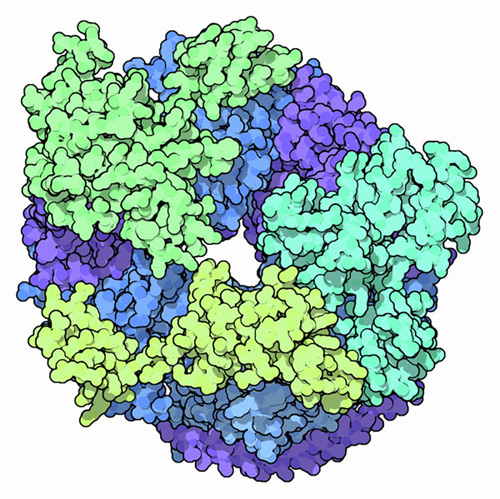|
Inhaltsübersicht | Nanomaschinen | Moleküle | Programme | Kurse | Fun | Links |
||
| > |
Exosomes

Our genetic information is stored safely inside the nucleus of each cell. However, most of the action in a typical cell occurs outside the nucleus: proteins are built in the cytoplasm, energy is produced in the mitochondria, and interactions with the environment occur at the cell surface. So, the nucleus needs a way to communicate with the rest of the cell. RNA molecules perform this job. They are the messengers that deliver genetic information from the nucleus to places where it is needed for synthesis and control.
Special Delivery
In most cases, RNA molecules are disposable messages. Information is copied from DNA to RNA in the nucleus, the message is delivered to the proper location, then the RNA is destroyed, recycling its component nucleotides for the next message. In bacteria, a typical messenger RNA may last only a few minutes, but some of our more useful messages may last hours. Of course, this process must be carefully controlled--you don't want to destroy RNA molecules that are still useful. So an elaborate collection of RNA destruction machinery sifts through the RNA molecules, picks the ones that are obsolete, and systematically breaks them apart.
Total Destruction
The exosome, like the human one shown here from PDB entry 2nn6, is one of the molecules that dismantles obsolete RNA. The central machinery of exosome is shaped like a barrel, with its RNA cleavage machinery sheltered in a groove inside. This barrel is composed of six different subunits, shown in blue and purple here. The three additional subunits shown in green help to ensure that only the proper RNA molecules are fed into the hungry mouth of the complex. The use of a barrel-shaped molecule to control destruction might sound familiar to you—a similar shape is used in the proteasomes that dismantle obsolete proteins.
Next: Preparing for Destruction
Last changed by: A.Honegger,